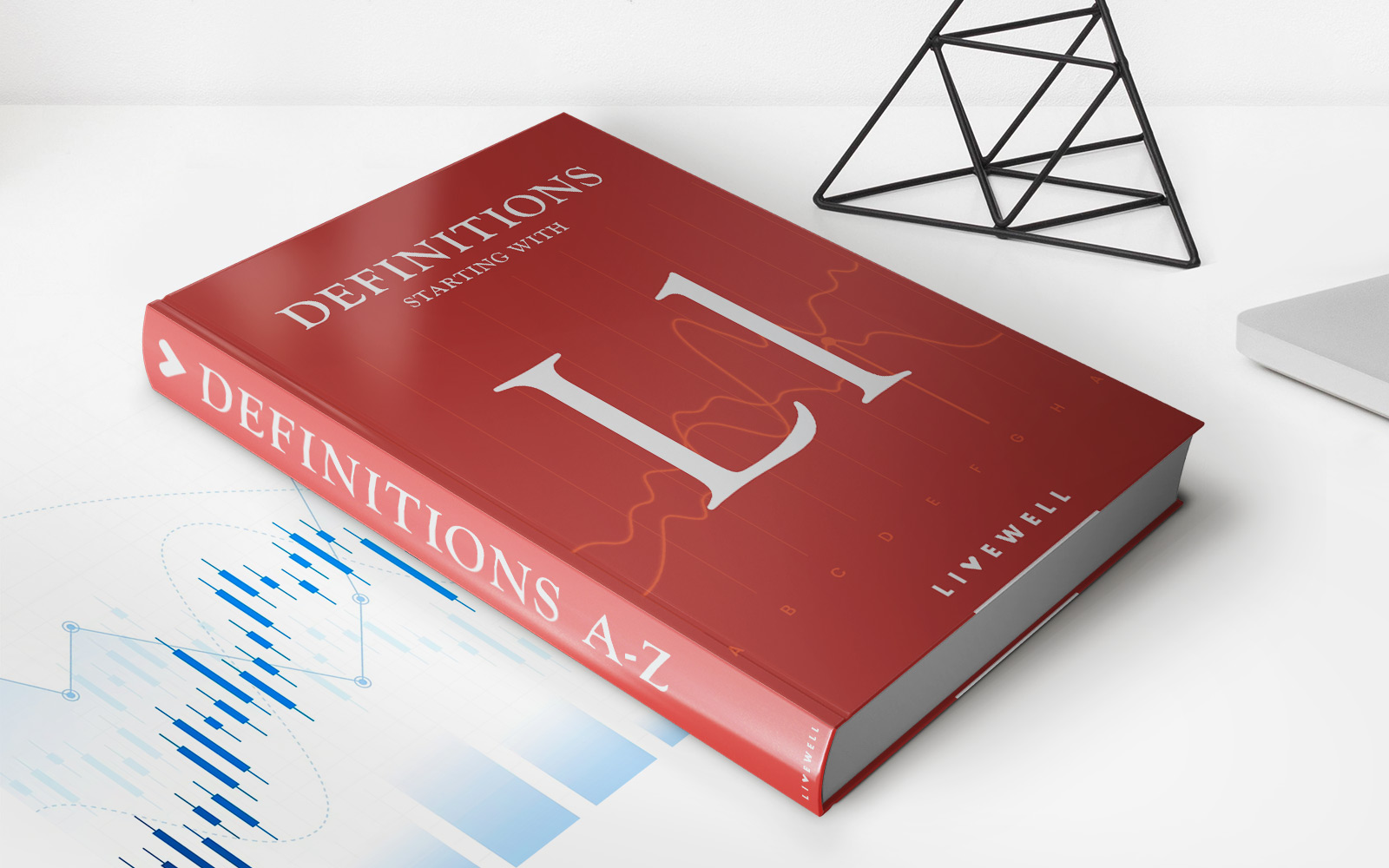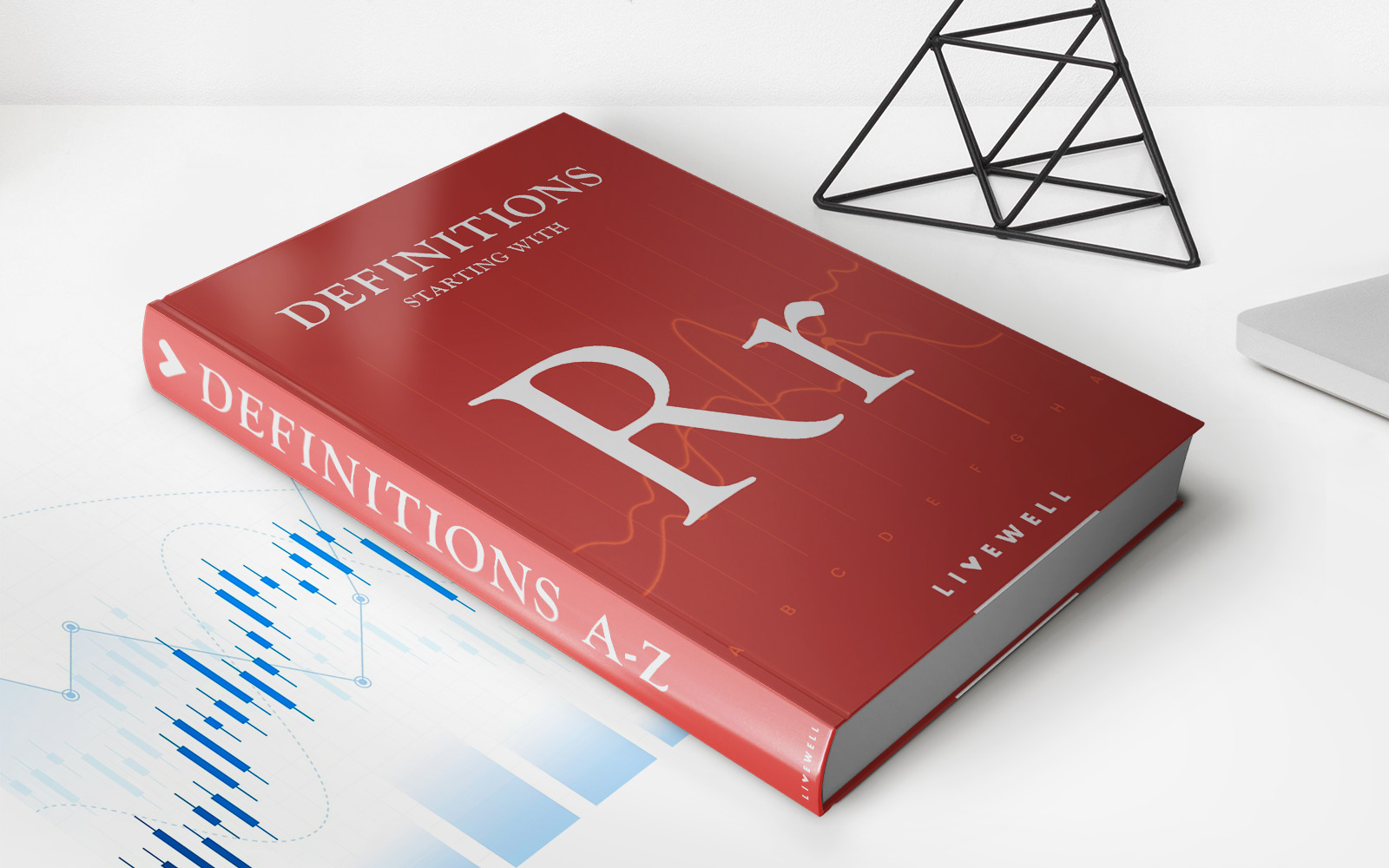Home>Finance>How Does Return-Of-Premium Life Insurance Work?


Finance
How Does Return-Of-Premium Life Insurance Work?
Modified: February 21, 2024
Learn how return-of-premium life insurance works and how it can provide financial security for you and your loved ones. Explore its benefits and coverage options.
(Many of the links in this article redirect to a specific reviewed product. Your purchase of these products through affiliate links helps to generate commission for LiveWell, at no extra cost. Learn more)
Table of Contents
- What is Return-of-Premium Life Insurance?
- How Does Return-of-Premium Life Insurance Work?
- Pros and Cons of Return-of-Premium Life Insurance
- Is Return-of-Premium Life Insurance Right for You?
- Comparing Return-of-Premium Life Insurance to Other Types of Life Insurance
- How to Choose the Best Return-of-Premium Life Insurance Policy
- Conclusion
What is Return-of-Premium Life Insurance?
Return-of-Premium Life Insurance is a type of life insurance policy that offers a unique feature – it refunds the premiums paid if the insured individual survives the policy term. In other words, if you outlive the term of the policy, you will receive a full refund of all the premiums you paid throughout the coverage period.
Traditional life insurance policies provide a death benefit to the beneficiaries upon the insured’s death. However, with return-of-premium life insurance, there is an added benefit of receiving a refund of premiums if the insured person remains alive until the end of the policy term. This feature sets it apart from other types of life insurance such as term life insurance or whole life insurance.
Return-of-premium life insurance offers a way for individuals to protect their loved ones financially in the event of their untimely death while also offering the potential to recoup the money invested in premiums if they outlive the policy term.
This type of insurance policy typically has a specific term, such as 10, 20, or 30 years, during which the insured pays regular premiums. If the insured person passes away during the policy term, the designated beneficiaries receive the death benefit. However, if the insured survives the term, they will receive a full refund of the premiums paid, usually tax-free.
Return-of-premium life insurance is often considered to be a middle ground between term life insurance and whole life insurance. While it provides the death benefit protection of term life insurance, it also provides the potential cash value accumulation of whole life insurance.
It’s important to note that return-of-premium life insurance policies tend to have higher premiums compared to traditional term life insurance policies. This is because the refund feature is factored into the premium calculations. However, for individuals who want the peace of mind of knowing their premiums will not go to waste if they outlive the policy, return-of-premium life insurance can be a compelling option.
How Does Return-of-Premium Life Insurance Work?
Return-of-Premium Life Insurance works in a straightforward manner. Here’s how it typically operates:
- Premium Payments: As with any life insurance policy, the policyholder is required to make regular premium payments. These payments can be made monthly, quarterly, annually, or according to the terms outlined in the policy.
- Policy Term: Return-of-Premium Life Insurance has a specific term, which is agreed upon when the policy is purchased. This term can range from 10 to 30 years or even longer.
- Surviving the Policy Term: If the insured individual survives the policy term and has made all the required premium payments, they become eligible for a full refund of the premiums paid. The refund includes all the premiums paid throughout the coverage period.
- Refund Options: The refund of premiums can be received in different ways, depending on the insurance company and the policy terms. It could be in the form of a lump sum payment or disbursed over a specific period, such as monthly or annually.
It’s important to understand that return-of-premium life insurance only provides a refund of premiums if the insured person outlives the policy term. If the insured passes away during the term, the designated beneficiaries will receive the death benefit as outlined in the policy.
Another key aspect to note is that if the policyholder cancels the policy before the term ends, they may not be eligible for a full refund of premiums. Insurance companies typically have specific rules regarding the cancellation of return-of-premium policies, and the refund amount may be reduced or forfeited altogether. Therefore, it’s essential to carefully review the policy terms and conditions before making any decisions.
Furthermore, return-of-premium life insurance policies may also offer additional riders or benefits that can be added to the base policy. These riders could provide coverage for critical illness, disability, or long-term care. However, adding riders usually increases the premium amount.
Lastly, it’s important to keep in mind that return-of-premium life insurance premiums are generally higher when compared to traditional term life insurance. This is because the cost of providing the refund feature is factored into the premium calculations. It’s crucial to evaluate your financial situation and determine if the potential refund of premiums justifies the higher cost of the policy.
Pros and Cons of Return-of-Premium Life Insurance
Return-of-Premium Life Insurance, like any financial product, has its advantages and disadvantages. Let’s explore the pros and cons of this type of insurance:
Pros:
- Refund of Premiums: The primary advantage of return-of-premium life insurance is the potential to receive a full refund of all premiums paid if the insured person survives the policy term. This can provide a sense of security and peace of mind, knowing that the money invested in premiums will not go to waste.
- Death Benefit Protection: Return-of-premium life insurance still provides the essential death benefit protection of traditional life insurance policies. If the insured person passes away during the policy term, the designated beneficiaries will receive the death benefit, providing financial security to their loved ones.
- Flexibility: Some return-of-premium policies offer flexibility by allowing policyholders to convert the policy to permanent life insurance later on, providing potential cash value accumulation and extended coverage.
- Tax Benefits: In most cases, the refund of premiums received at the end of the policy term is tax-free. This can be advantageous for individuals seeking tax-efficient ways to protect their family’s financial future.
Cons:
- Higher Premiums: Return-of-premium life insurance generally has higher premiums compared to traditional term life insurance policies. The cost of providing the refund feature is factored into the premium calculations, making it more expensive. This higher cost can be a significant disadvantage for individuals on a tight budget.
- No Interest on Premiums: While the premiums are refunded, there is no interest accrued on the refunded amount. This means that the policyholder will not earn any additional earnings or investment gains on the premiums paid.
- Cancelation Restrictions: Canceling a return-of-premium policy before the term ends may result in a reduced refund or no refund at all. Insurance companies often have specific rules regarding cancelations, so it’s important to understand the terms and conditions before making any decisions.
- Opportunity Cost: The higher premiums required for return-of-premium life insurance mean that policyholders have less money available for other investments or financial goals. It’s essential to consider the opportunity cost of tying up funds in this type of insurance policy.
Ultimately, the decision to choose return-of-premium life insurance should be based on your individual financial situation, risk tolerance, and long-term goals. Assessing the pros and cons, along with extensive research and consultation with a financial professional, will help you determine if this type of policy aligns with your needs and priorities.
Is Return-of-Premium Life Insurance Right for You?
Deciding whether return-of-premium life insurance is the right choice for you requires careful consideration of your financial goals, risk tolerance, and budget. Here are some factors to consider when evaluating if this type of insurance is a suitable option:
Your End Goal:
What are your financial objectives? If your primary goal is to protect your loved ones financially in the event of your untimely death, traditional term life insurance might be a more cost-effective option. However, if you also want the potential to receive a refund of premiums if you outlive the policy term, return-of-premium life insurance might align better with your goals.
Financial Budget:
Return-of-premium life insurance typically has higher premiums compared to traditional term life insurance. It’s important to evaluate your budget to determine if you can comfortably afford the premiums while also meeting your other financial obligations and goals. Consider the long-term affordability of the policy and ensure it fits within your overall financial plan.
Time Horizon:
Consider the length of time you need life insurance coverage. Return-of-premium policies often have specific terms, such as 10, 20, or 30 years. If your coverage needs extend beyond these terms, or if you require permanent coverage, other types of life insurance policies, such as whole life insurance, may be more suitable.
Risk Tolerance:
Are you willing to pay higher premiums for the potential refund of premiums? Return-of-premium life insurance requires a greater investment of premiums upfront. While this may provide a sense of security and the potential for a refund, it also means you will have less money available for other financial goals, such as investments or savings.
Tax Considerations:
Return-of-premium life insurance typically provides a tax-free refund of premiums. If you have concerns about tax efficiency and want to minimize potential tax implications, this may be an attractive aspect of this type of policy.
Ultimately, the decision of whether return-of-premium life insurance is right for you depends on your individual circumstances and priorities. It’s essential to carefully review the terms and conditions of the policy, compare different options, and seek advice from a financial professional who can provide personalized guidance based on your unique needs and goals.
Comparing Return-of-Premium Life Insurance to Other Types of Life Insurance
Return-of-Premium Life Insurance is just one type of life insurance policy, and it’s important to understand how it compares to other options. Let’s examine how return-of-premium life insurance stacks up against other common types of life insurance:
Term Life Insurance:
Term life insurance provides coverage for a specific term, such as 10, 20, or 30 years. Unlike return-of-premium life insurance, term life insurance does not offer a refund of premiums if the insured outlives the policy term. However, term life insurance typically has lower premiums compared to return-of-premium policies, making it a more affordable choice for individuals seeking basic death benefit protection.
Whole Life Insurance:
Whole life insurance is a type of permanent life insurance that provides coverage for the entire lifetime of the insured. It also accumulates cash value over time, which can be accessed through policy loans or withdrawals. Unlike return-of-premium life insurance, whole life insurance does not offer a refund of premiums. However, it does provide lifelong coverage and the potential for cash value growth, making it an attractive choice for individuals who prioritize lifelong coverage and potential investment returns.
Universal Life Insurance:
Universal life insurance is another form of permanent life insurance that offers flexible premiums and death benefits. It also includes a cash value component that can accumulate over time. Universal life insurance does not typically offer a refund of premiums like return-of-premium life insurance. However, it provides more flexibility in premium payments and death benefit options, making it a versatile choice for individuals who want long-term coverage with the option to adjust their policy as their needs change.
Variable Life Insurance:
Variable life insurance combines life insurance coverage with investment options. Policyholders can allocate premiums to different investment accounts, such as mutual funds, allowing for potential growth in cash value. Variable life insurance does not offer a refund of premiums like return-of-premium life insurance. However, it provides the opportunity for greater potential investment returns, making it suitable for individuals who seek both life insurance protection and investment opportunities.
When comparing return-of-premium life insurance to other types of life insurance, it’s important to consider your specific financial goals, risk tolerance, and budget. Each type of policy offers unique features and benefits, so it’s crucial to assess your individual needs and consult with a financial professional to determine which option aligns best with your circumstances.
How to Choose the Best Return-of-Premium Life Insurance Policy
When selecting a return-of-premium life insurance policy, it’s important to consider several factors to ensure you choose the best one for your needs. Here are some key points to consider during the decision-making process:
1. Determine Your Coverage Needs:
Evaluate your financial responsibilities and determine the amount of coverage you need to protect your loved ones. Consider factors such as outstanding debts, mortgage payments, education expenses, and future financial goals. This will help you determine the appropriate death benefit amount for your policy.
2. Assess the Policy Term:
Consider how long you need coverage. Policy terms typically range from 10 to 30 years, so choose a term that aligns with your financial goals and obligations. Ensure that the term is sufficient to protect your loved ones during critical years, such as when children are young or when significant debts need to be repaid.
3. Compare Premiums from Different Providers:
Shop around and obtain premium quotes from multiple insurance providers. Compare the cost of return-of-premium life insurance policies from various companies to ensure you get the best possible rate for the coverage you need. Consider not only the initial premium but also any potential premium increases over time.
4. Review the Refund Structure:
Understand how the refund of premiums works for each policy you consider. Some policies may provide a lump-sum refund at the end of the term, while others may offer a periodic refund over a specified period. Evaluate the refund options and consider how they align with your financial goals and preferences.
5. Research the Insurance Provider:
Look into the reputation and financial stability of the insurance company offering the return-of-premium life insurance policy. Check their ratings with independent rating agencies to ensure you are working with a reputable insurer that will be able to fulfill its obligations in the event of a claim.
6. Understand Policy Limitations and Exclusions:
Read the policy terms and conditions carefully to understand any limitations or exclusions that may apply. For example, some policies may have restrictions related to pre-existing conditions or certain activities. Make sure you are fully aware of any policy restrictions and how they may impact your coverage.
7. Seek Professional Advice:
Consider working with a licensed insurance agent or financial advisor who specializes in life insurance to guide you through the decision-making process. They can provide personalized recommendations based on your unique circumstances and help you assess the various options available.
By considering these factors and conducting thorough research, you can choose the best return-of-premium life insurance policy that aligns with your coverage needs, budget, and long-term financial goals.
Conclusion
Return-of-Premium Life Insurance offers a unique feature that sets it apart from other types of life insurance policies. It provides individuals with the opportunity to receive a refund of premiums if they outlive the policy term. While this can provide a sense of financial security, it’s important to carefully consider the pros and cons before deciding if it’s the right choice for you.
One of the main advantages of return-of-premium life insurance is the potential refund of premiums, providing a valuable safety net for policyholders who survive the policy term. This feature can help individuals recoup the money invested in premiums and can be particularly appealing for those who want both death benefit protection and a potential return of their premiums.
However, return-of-premium life insurance does come with certain drawbacks. The premiums tend to be higher compared to traditional term life insurance, reducing the amount available for other financial goals. Additionally, canceling the policy before the term ends may result in reduced or no refunds, and there is no interest earned on the premium refund.
When choosing a return-of-premium life insurance policy, it’s crucial to evaluate your coverage needs, budget, and future financial goals. Consider the policy term, compare premiums from multiple providers, and review the refund structure of each policy. It’s also important to research the insurance company’s reputation and seek guidance from a qualified insurance professional.
Ultimately, the decision depends on your individual circumstances and priorities. If the potential refund of premiums aligns with your financial goals and you can comfortably afford the higher premiums, return-of-premium life insurance can provide the protection and peace of mind you seek.
Remember to carefully read and understand the terms and conditions of the policy before making a decision. Consider reviewing your coverage periodically to ensure it still meets your evolving needs and consult with a financial professional whenever necessary.
By making an informed decision, you can select the best return-of-premium life insurance policy that provides the protection and potential return on investment that you desire, helping you safeguard your financial future and provide for your loved ones.














